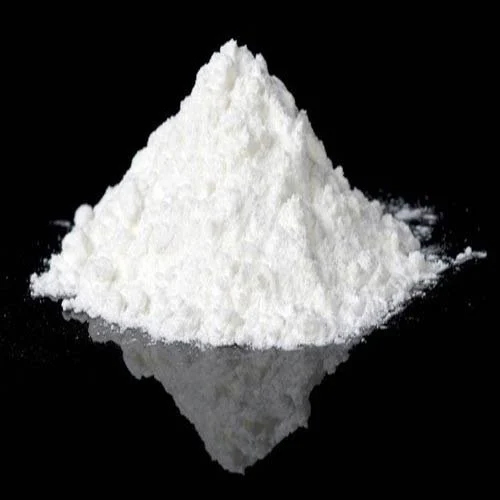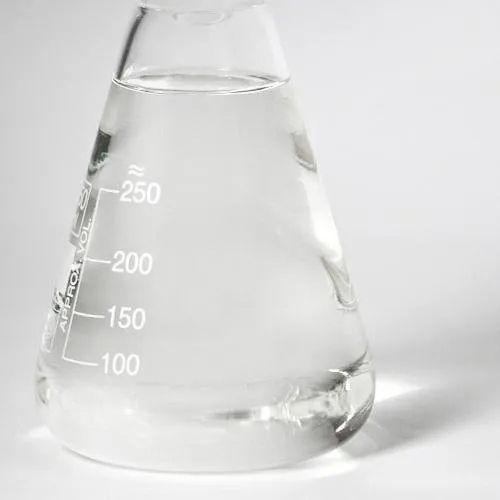Welcome to Our Company
Strontium Fluoride
400 INR/Kilograms
Product Details:
- Storage Room Temperature
- Density 4.24 Gram per cubic centimeter(g/cm3)
- Physical Form Powder
- Purity 98%
- Solubility Water Soluble
- Application Industrial
- Grade Technical Grade
- Click to View more
X
Strontium Fluoride Price And Quantity
- 1 Kilograms
- 400 INR/Kilograms
Strontium Fluoride Product Specifications
- Industrial
- SrF2
- Water Soluble
- 1472 degree centigrade
- Strontium fluoride is a white crystalline solid.
- Powder
- 98%
- 4.24 Gram per cubic centimeter(g/cm3)
- Technical Grade
- Room Temperature
Product Description
The inorganic substance strontium fluoride has the formula SrF2. Due to its special qualities, it is a crystalline solid that is employed in a variety of applications. Strontium ions (Sr2+) and fluoride ions (F-) combine to form this type of substance. It belongs to the category of substances known as ions, in which electrostatic forces cause positively charged ions (cations) to be drawn to negatively charged ions (anions). Strontium fluoride produces colourless crystals with a cubic crystal shape. With a density of roughly 4.24 grammes per cubic centimetre, it has a high melting point of roughly 1,470 degrees Celsius.
Properties of Strontium Fluoride:
1. Chemical Formula: SrF2
2. Molar Mass: 125.62 g/mol
3. Appearance: Strontium fluoride is a white crystalline solid.
4. Melting Point: 1472 degree centigrade
5. Boiling Point: Approximately 2460 degree centigrade
6. Density: 4.24 g/cm3
7. Solubility: Strontium fluoride is slightly soluble in water (about 0.116 g/100 mL at 20 degree centigrade).
8. Crystal Structure: Strontium fluoride crystallizes in the cubic crystal system.
9. Transparency: Strontium fluoride is transparent in the ultraviolet (UV) range, and it is often used in UV optics applications.
10. Refractive Index: The refractive index of strontium fluoride is relatively high, making it useful for optical components like lenses and prisms.
11. Crystal Structure: Cubic
Other Properties:
1. Strontium fluoride has good radiation hardness, making it suitable for use in various radiation detection and protection applications.
2. It is used as a flux in metallurgy to remove impurities from molten metals.
3. Strontium fluoride is also employed in some toothpaste formulations for its potential benefits in reducing tooth sensitivity.
4. In some cases, it can be utilized as an antireflection coating for optical elements.
Safety Considerations:
Strontium fluoride is generally considered safe when handled properly. However, like all fluoride compounds, it should be handled with care and following appropriate safety protocols to avoid ingestion or inhalation, which can be harmful. Prolonged exposure to high concentrations of strontium fluoride dust or fumes can cause respiratory irritation.
Uses of Strontium Fluoride:
1. Optical Components: Strontium fluoride is transparent in the ultraviolet (UV) range, making it useful for manufacturing optical components such as lenses, prisms, and windows for UV spectroscopy and imaging systems. Its high refractive index also makes it valuable for enhancing the optical performance of certain devices.
2. UV Optics: Because of its transparency to UV light, strontium fluoride is employed in specialized optics for ultraviolet imaging, lithography, and other applications where conventional glasses may not be suitable due to their limited transparency in the UV range.
3. Scintillation Detectors: Strontium fluoride is used as a scintillator material in radiation detection devices. When exposed to ionizing radiation, it emits light, which can be detected and converted into electrical signals to measure and analyze the radiation levels. Its good radiation hardness and scintillation properties make it useful in radiation monitoring and dosimetry applications.
4. Metallurgy: Strontium fluoride is used as a flux in metallurgical processes. Fluxes help to remove impurities from molten metals by facilitating the formation of slag, which can be skimmed off. In the aluminum industry, it is used to refine the aluminum alloy by removing magnesium.
5. Toothpaste: In some toothpaste formulations, strontium fluoride is used as an active ingredient to help reduce tooth sensitivity by blocking the tiny tubules in the teeth that transmit pain signals to the nerves.
6. Antireflection Coatings: Strontium fluoride coatings can be applied to optical elements to reduce reflections and improve the overall optical performance of devices like lenses, camera lenses, and binoculars.
7. Specialty Ceramics: Strontium fluoride is used in the production of specialty ceramics, particularly those requiring a high refractive index and low dispersion.
8. Light Emitting Diodes (LEDs): Strontium fluoride can be used as a phosphor material in certain LED applications to convert the blue light emitted by the LED into other colors like red or green.
FAQ:
1. What is strontium fluoride?
Ans: Strontium fluoride (SrF2) is an inorganic compound composed of strontium (Sr) and fluorine (F). It is a white crystalline solid with a chemical formula SrF2.
2. What are the main uses of strontium fluoride?
Ans: Here are some of the uses of this strontium fluoride:
Optical Components: Used in UV-transparent optics like lenses and prisms.
UV Optics: Employed in UV imaging and lithography applications.
Scintillation Detectors: Used in radiation detection and dosimetry devices.
Metallurgy: Used as a flux to remove impurities from molten metals.
Toothpaste: Used to reduce tooth sensitivity in some toothpaste formulations.
Antireflection Coatings: Applied to optical elements to reduce reflections.
Specialty Ceramics: Used in specialty ceramic production.
LEDs: Used as a phosphor material in certain LED applications.
3. What are the safety considerations when working with strontium fluoride?
Ans: Strontium fluoride is generally considered safe when handled properly. However, it should be handled with care to avoid ingestion or inhalation, which can be harmful. Prolonged exposure to high concentrations of strontium fluoride dust or fumes can cause respiratory irritation. It is essential to follow recommended safety guidelines and consult the Material Safety Data Sheet (MSDS) when working with strontium fluoride or any other chemicals.
4. What are the applications of strontium fluoride in the field of optics?
Ans: Strontium fluoride's UV transparency and high refractive index make it ideal for various optical applications, including manufacturing lenses, prisms, windows, and optical components for UV spectroscopy, imaging systems, and lithography.
5. How does strontium fluoride work in toothpaste?
Ans: In toothpaste, strontium fluoride is used as an active ingredient to help reduce tooth sensitivity. It blocks the tiny tubules in the teeth that transmit pain signals to the nerves, providing relief to individuals with sensitive teeth.
6. Can strontium fluoride be used in radiation monitoring?
Ans: Yes, strontium fluoride is used as a scintillator material in radiation detection devices. When exposed to ionizing radiation, it emits light, which can be detected and converted into electrical signals to measure and analyze radiation levels. It is commonly employed in radiation monitoring and dosimetry applications.
7. How is strontium fluoride used in metallurgy?
Ans: In metallurgy, strontium fluoride is used as a flux to facilitate the removal of impurities from molten metals. It helps in the formation of slag, which can be skimmed off, thereby refining the metal and improving its quality.
8. What other applications require the use of strontium fluoride?
Ans: Strontium fluoride is also used in antireflection coatings for optical elements, as a phosphor material in certain LED applications, and in the production of specialty ceramics requiring high refractive index and low dispersion.
9. Where can I find strontium fluoride?
Ans: Strontium fluoride can be purchased from chemical suppliers, laboratory equipment suppliers, and specialized chemical stores. However, handling and purchasing of chemicals may be subject to local regulations and restrictions. Always ensure you are following proper safety protocols and complying with the law when obtaining strontium fluoride.
Tell us about your requirement

Price:
Quantity
Select Unit
- 50
- 100
- 200
- 250
- 500
- 1000+
Additional detail
Mobile number
Email









